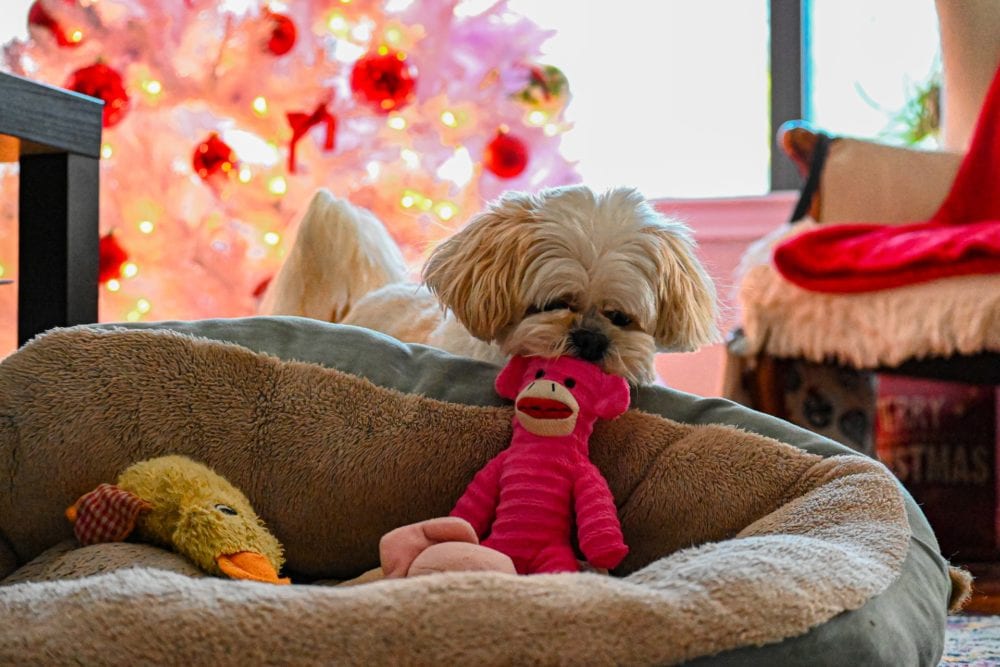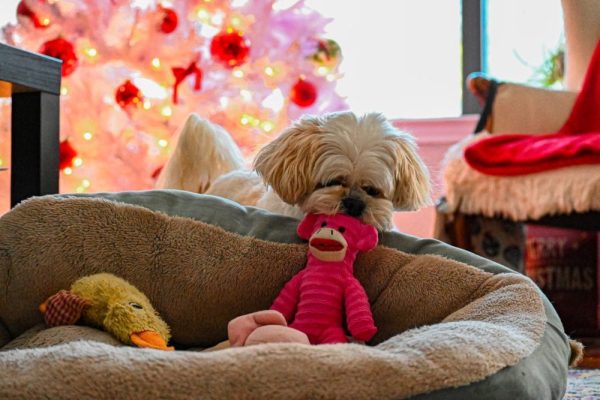If you want to keep your house a little tidier and impress your friends, consider teaching your dog to clean up. Dogs might not be able to scrub toilets or sweep floors, but they can pick up toys and put them in a basket. These nine tips and tricks will help you break down the skill of “cleaning up” into manageable chunks that will help your dog to successfully learn this skill.
The 9 Tricks for Teaching Your Dog to Put Away Toys
1. Start With Basic Obedience
If you want your dog to clean up on cue, it helps to get some other skills down pat first. Cleaning up is an advanced skill with several different steps. Most dogs will do best if they already know basic commands such as sit, stay, and heel. That way, your dog is already familiar with how command training works and has a good working relationship with you.
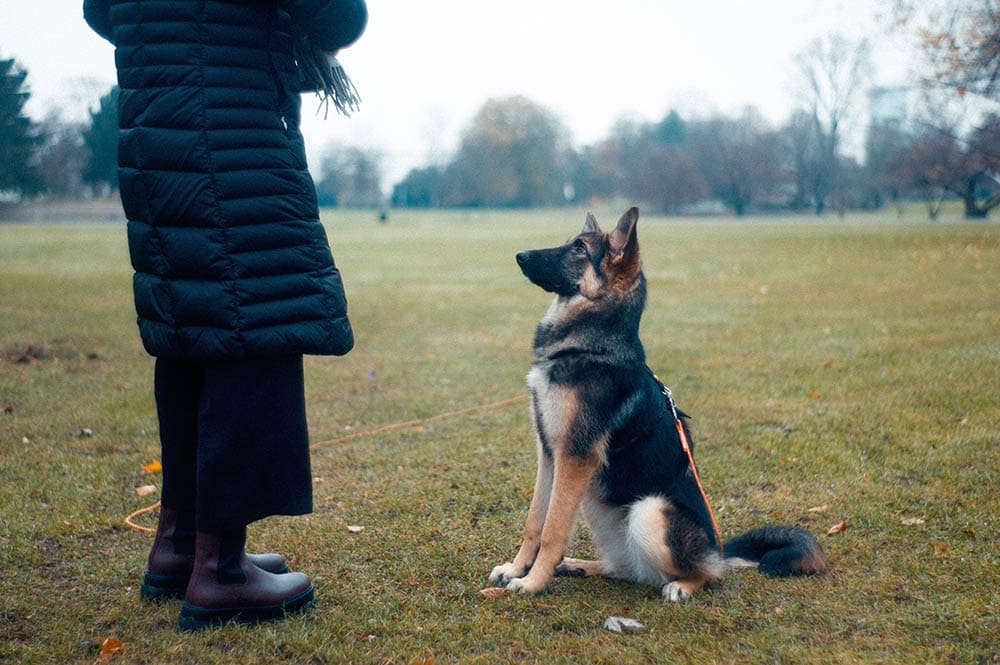
2. Find the Right Box
Most dogs probably won’t learn to put toys away in a tall chest with a lid—the right box is key. Look for a box that is wide and shallow enough that your dog can easily reach the opening. It should also be big enough to hold all the toys you plan on your dog having access to. It can be tricky to get your dog to recognize a new box later on, so starting with a good box is key.
3. Start Without Distractions
Like any training, you’ll want to start on “easy mode.” This means finding a distraction-free space where your dog can focus on the important things: you, the toy, and eventually the box. It’s okay if you don’t start in the box’s final spot; you can teach your dog to clean up in a quiet place and then move down to the toy box later. Choose a toy that your dog will be interested in but not too distracted by.
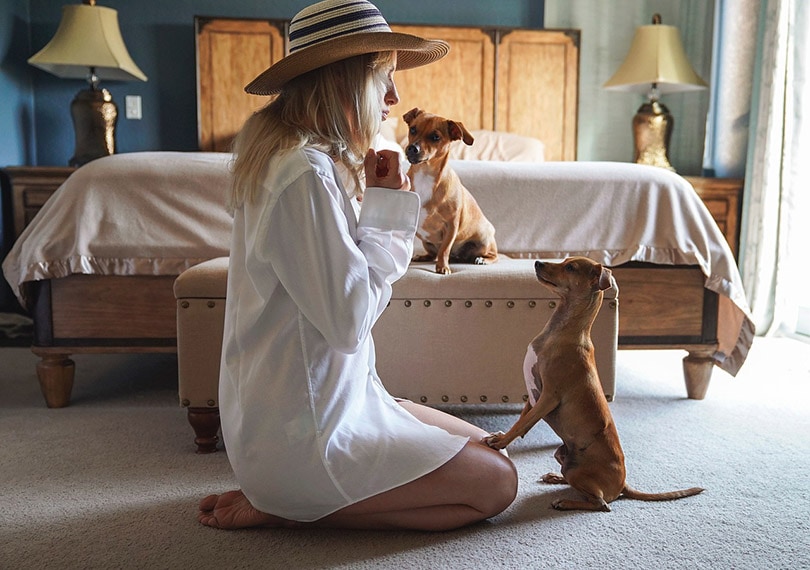
4. Make It a Game
Dogs love to play, and treating obedience training like a game is a great way to keep your dog invested. This means being relaxed and excited. You can be firm with your command, but if you are tense and angry, your dog will become stressed instead of engaged. Don’t punish a dog for failing to follow a command, especially in the early teaching stages.
5. Teach Your Dog to “Grab It”
At this point, you’ll want to teach your dog the skills it needs to start cleaning. Breaking a complex task down into steps will help your dog master one skill at a time before eventually putting them all together. Start by teaching your dog to pick up a toy in its mouth. Pick up your toy and move it around to get your dog excited. Then, just as it is about to grab the toy, say “grab it” or “take it.” Reward your dog with praise and a click if you use a clicker. After a while, you can put the toy on the floor or even across the room and tell your dog to “grab it.”
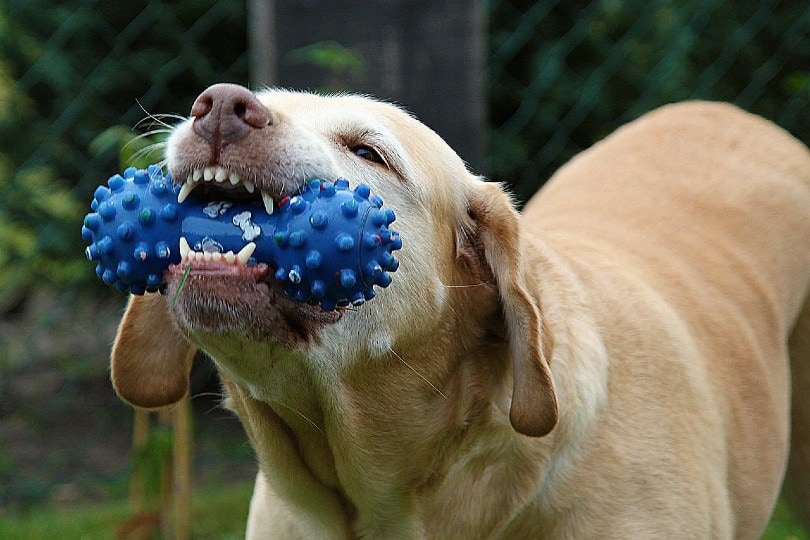
6. Teach Your Dog to “Bring It”
Once your dog has mastered picking up a toy on command, it needs to learn to bring the toy back to you. Some dogs fetch automatically and don’t need this step, but others benefit from a separate step to “bring it” to you. Encourage the dog to come to you with the toy and then praise and reward it.
7. Teach Your Dog to “Drop It”
Finally, you need to teach your dog to “drop it.” Start without worrying about the toy basket. When your dog brings you a toy, offer a tempting treat and say “drop it.” If the treat is good enough, most dogs will automatically let go of the toy. After a while, you can hold back the treat until after the dog drops the toy instead of offering it right away. Once your dog drops things consistently, you can move to the next step.
8. Combine the Steps Into “Clean Up”
This time, sit near the basket and encourage your dog to bring you a toy. When the dog is standing over the basket, ask him to drop it. After several repetitions of dropping the toy into the basket, switch the command to “clean up” or “put away.” Once you’ve done that, you can start putting the toys a few feet away from the basket. The key here is to associate “clean up” with the basket, not just the action of dropping. Along the way, you can prompt with any of the other commands as needed to get your dog to understand the command.

9. Expand the Game
Once your dog is consistently targeting the basket, you can start to expand the game into a full-fledged clean-up. Start expecting your dog to grab multiple toys before getting a reward—two or three at the most. Continue to prompt your dog as needed. You can also step further from the basket so that your dog practices bringing toys to the toy box, and not necessarily to you. Before long, your dog will be happy to clean up at a word.
Conclusion
As you can see, cleaning up is a pretty advanced skill. It takes some work to teach your dog everything it needs to know to clean up toys into a toy box or basket, but the reward is pretty nice. Instead of having to fight your dog for toys or constantly follow after them, you can sit back and let the dog do all the work.
Featured Image Credit: leks quintero, Unsplash
Contents
- The 9 Tricks for Teaching Your Dog to Put Away Toys
- 1. Start With Basic Obedience
- 2. Find the Right Box
- 3. Start Without Distractions
- 4. Make It a Game
- 5. Teach Your Dog to “Grab It”
- 6. Teach Your Dog to “Bring It”
- 7. Teach Your Dog to “Drop It”
- 8. Combine the Steps Into “Clean Up”
- 9. Expand the Game
- Conclusion

